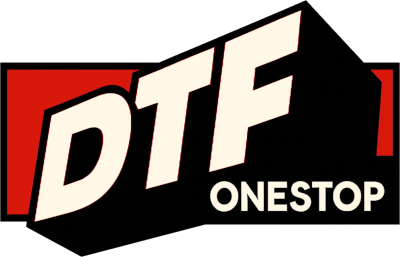
DTF Printing Setup: A Complete Guide to High-Quality Textile Transfers
Direct to Film (DTF) printing has rapidly become the go-to method for textile businesses due to its versatility, vibrant print quality, and durability. Whether you're a custom apparel business, print shop, or textile manufacturer, setting up an efficient DTF printing operation can enhance productivity and profitability.
In this guide, we'll walk through the essential steps for choosing the best DTF printing equipment, optimizing workflow, managing costs, and maintaining top-tier print quality.
1. Choosing the Right DTF Printing Equipment
Selecting the right DTF printer is the foundation of a successful operation. Look for high-performance printers with:
✔ High-resolution printing capabilities for sharp, detailed designs
✔ Durability to handle continuous production
✔ Compatibility with various DTF inks and transfer films
Investing in a reliable DTF printer ensures long-term efficiency and consistent output, making it essential for businesses looking to scale.
2. Understanding DTF Inks and Transfer Films
Premium-quality DTF inks and transfer films are crucial for vibrant colors, long-lasting prints, and flexibility.
- DTF Inks: Choose high-elasticity, wash-resistant inks to prevent cracking or fading.
- Transfer Films: Opt for PET films designed for smooth ink adhesion, ensuring flawless transfers onto fabric.
By using high-quality consumables, you can maintain professional-grade results in every print.
3. Creating an Efficient Workflow for DTF Printing
A well-structured DTF printing workflow improves productivity and minimizes waste.
🔹 Organized Workspace: Arrange printers, curing stations, and heat presses for seamless material flow.
🔹 Print Management Software: Use design and queue management tools to streamline production.
🔹 Consistent Maintenance: Regular printer and heat press maintenance ensures smooth operations and prevents downtime.
Implementing workflow automation and quality control measures leads to higher efficiency and reduced errors.
4. Cost Management Strategies for DTF Printing
Keeping costs under control is essential for maximizing profits. Here’s how:
💰 Bulk Purchasing: Order DTF inks, transfer films, and powders in bulk to reduce unit costs.
🔧 Preventative Maintenance: Regular printer and heat press maintenance prevents costly repairs and production delays.
📦 Efficient Supply Chain: Partner with reliable suppliers to ensure consistent stock availability at competitive prices.
By strategically managing expenses, businesses can increase profit margins while maintaining high-quality output.
5. Maintaining High-Quality DTF Prints
Delivering exceptional DTF print quality is key to customer satisfaction and repeat business.
✅ Perform Regular Quality Checks: Inspect design accuracy, color vibrancy, and transfer adhesion at each stage.
✅ Calibrate Equipment: Regularly adjust print settings and alignments for precise color reproduction.
✅ Test Print Runs: Conduct sample prints before full production to identify and fix potential issues.
Consistency in print quality, fabric compatibility, and durability will set your DTF printing business apart from competitors.
Final Thoughts
Setting up a DTF printing operation requires careful planning, investment in quality equipment, and attention to workflow efficiency. By implementing these best practices, you can establish a successful, cost-effective, and high-performing DTF printing business that delivers exceptional results in the competitive textile market.
🚀 Ready to take your DTF printing to the next level? Follow these steps and build a thriving custom apparel business today! 🚀
